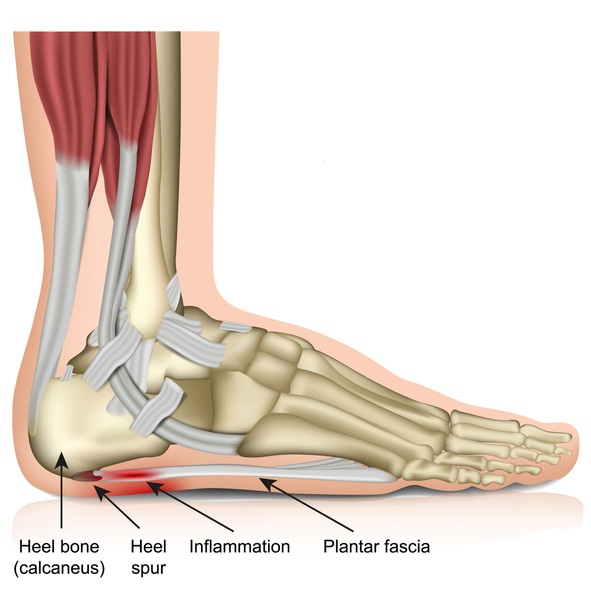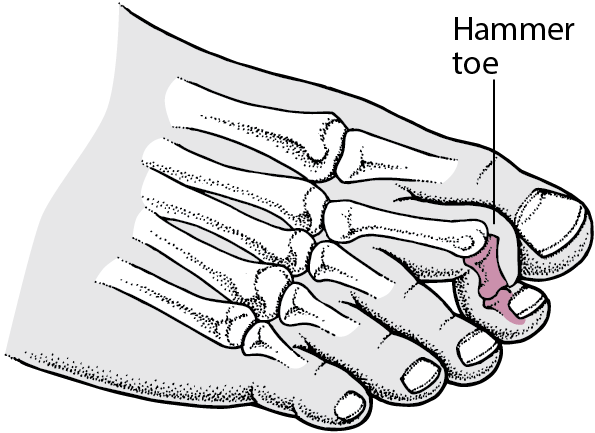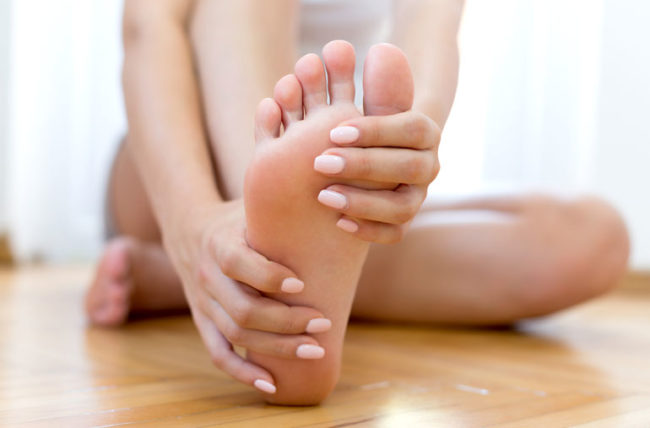Which part of your foot has the pain? Is there a problem with the movement of the affected area? Though it is quite easy to diagnose foot trauma or disease, they are quite painful and result in limited movement. This write-up will provide you the basic details of foot pain, types, and causes.
A foot is made up of 26 bones in total. These bones are connected by 33 joints along with muscles, tendons, ligaments, and blood vessels. Foot pain is often caused by improper foot function. Moving ahead, know more about foot anatomy.
- The Arch: The foot bones form the two arches, longitudinal arch runs the length of the foot and the transverse arch runs the width.
- The Ankle joint: It is the region where the leg and foot meet. The ankle includes ankle joint proper, the subtalar joint, and the tibia-fibular joint.
- Ligaments: These are the fibrous connective tissues surrounding joints. Hence, the foot bones are held together.
- Muscles: Along with plantar fascia, they provide support to the longitudinal arch. The plantar fascia is a web-like ligament that connects your heel to that of the front foot. It acts as a shock absorber.
- Tendons: The two peroneal tendons run in foot behind the outer ankle bone. One peroneal tendon attaches to the outer part of the mid-foot, while other tendon runs under the foot and attaches to the arch.
The foot pain has many sources and types; heels, toes, nerves, tendons, ligaments, and joints of the foot. Research shows that every 3 out of 4 people experience foot health problems at least once in life.
Type & causes of Foot pain
Pain in the foot does not necessarily mean a disease. It may due to improper foot function. Many-a-times, the shoes we wear are also one of the reasons for foot pain. Wrongly fitted shoes may lead to discomfort or pain in toes or ankles or high heels can cause pain around the ball of your foot.
Heel spurs
Heel spurs are the bony growth that develops around the heel bone. It is the calcium deposited forming bony protrusion underside of the heel bone.
The heel bone attaches to plantar fascia. It is when the connective tissue get overstretched due to
- Physical activities
- Over-weight
- Poorly fitted shoes
- Type of job where you have to spend most of the time standing

This overstretching leads to pain and inflammation on the heel bone. Over a few months, there is the formation of the extra bone underside and repeated tearing of the membrane covering the heel bone. Hence, it results in Heal spurs.
It is associated with chronic pain while walking or when something hits the heel bone. The pain is highly severe when we wake up in the morning and place the feet on the floor. The pain is also more when we stand up after prolonged sitting.
The home remedies like stretching exercises, the use of proper footwear, resting, and using cold packs on the heel area could help to soothe the pain.
Toenail Fungus
Toenail fungus is an infection caused by a type of dermatophytes which leads to hard, discolored, disfigured toenail which falls off after some time. Read more about toenail infection and it’s home remedies in detail.
Diabetes
People with diabetes may land up in chronic complications after prolonged uncontrolled sugar. When the blood vessels get damaged, it is called microvascular complications like a diabetic foot. Read more about diabetes and complication of the foot.
Rheumatoid Arthritis
One of the early signs of rheumatoid arthritis is stiffness, pain, and swelling in the hands and feet. The condition leads to pain when you walk, run, or do other moving activities.
RH is an Autoimmune Disease that occurs when our body’s immune system attacks our own body’s tissues. It affects the lining of joints, causing a painful swelling that results in bone erosion and joint deformity.
In-grown Toenail
It occurs when the edges or corners of your nails grow into the skin next to the nail. Specifically, the big toe is more likely to get the ingrown toenail.
The condition may cause pain, redness, and swelling of skin next to such a nail. It further leads to severe pain in the big toe and pus formation also. The wearing of tight shoes worsens the situation. Both teenagers and old age people are more prone to it.
Hammertoes
It is a deformity in which the toe has an abnormal bend in the middle joint. It leads to the bending of your toe downward instead of forward to look like a hammer. The condition may affect any of the toes of your feet, but the second toe is most likely to be affected.

The causes include;
- Use of improper shoes
- Foot structure
- Trauma
- Abnormal balance of toe muscles cause tendon contraction and tightening
Generally, if your second toe is larger than your big toe, the risk is higher. The issue triggers with age. Women are more prone to it due to the use of high heels.
Bruising
A bruise or contusion appears on the skin due to trauma like cut or blow to the foot. Such injury causes the blood vessels to damage or burst. Over time, the damaged area under the skin changes the color to black and blue. As healing progresses, it comes to normal.
Bruising can be experienced on the bottom of the foot due to some injuries. At the same time, if any of the foot bone fractures or overstretching of the arch also causes a bruise.
Corns
These are the yellowish and hardened callus growths develops on top of the toes. The corns forms due to the rubbing or friction of toes with the shoes or other toe. The skin layer develops is sensitive to touch.
If you walk or stand for a longer period, the skin below your toe nail, between your toes, or bottom skin of your feet comes in constant friction with shoes to develop corns.
Bunion
It is a protrusion of bone or tissue around a joint, mainly at the base of the big or little toe. They appear like bony bumps occur when the joint is stressed over a period of time. Also called Hallux Valgus.
The big toes angle in toward the second toe, and, in severe cases, may develop or tuck beneath the second toe. Women get bunions often as they wear tight pointed shoes. There are several causes to bunions like;
- Arthritis
- Tight and confined shoes
- Foot structure
Ankle Sprain
The ankle sprain is an injury to the foot’s ligaments in the ankle. These ligaments are tough bands of tissues surround and connect the bones of the leg to the foot.
Ankle rolls turns, or twists beyond its normal range of motion stretch or tears the ligaments. This leads to swelling, pain, or bruising to occur sprains in the ankle. Certain causes are
- Awkward foot placement
- Irregular surfaces
- Weak muscles
- Loose ligaments
- Wearing shoes with spiked heels
Morton Neuroma
The development of non-cancerous tissues in the nerves running between long bones of the foot. It is a thickening of tissues around one of the nerve’s leading to your toes.
The condition causes sharp and burning pain in the ball of your foot. The third and fourth toes are more prone to the condition as they rub each other and squeeze the nerves. The pain is severe sometimes may lead to tingling and numbness also. It generally occurs due to continued walking or standing, and due to the use of tight shoes.
Injury types
When a foot is fractured, the site of the fracture usually is painful and swollen. Some events lead to foot fractures or injuries like;
- Road accidents contribute majorly
- Sports injuries
- Wrong-way of doing exercises
- The weight lifted than normal capacity
- Use of sharp tools to cut nails
- Labor work activities often cause foot injuries, etc.
Prevention and remedies
- The use of proper shoes or sandals is strictly recommended. They must be larger than your feet size and should be made of quality material. If you are in sports, use specific athletic shoes. Use supporting socks. You can use shoe inserts and toe padding as well.
- For women, using high heels should be avoided. It is acceptable up to 5 cm heels only.
- Exercise regularly. Warm-up prior to any sports activity. Follow the proper steps and poses when exercising or doing stretching activities.
- Avoid running or stepping on uneven surfaces.
- Prevent recurrent injuries, particularly in sports.
- If you move a lot throughout the day, relieve your feet after.
- If experiencing manageable pain, massage the affected areas with some natural oils. Soaking and the use of ice packs are also recommended.
- Post-injury, do follow the instructions as per your doctor.
- Consult your physiotherapist, orthopedist, and health care provider if the injury is severe.
- If you are diabetic or with other chronic illnesses, take care of your feet properly.
